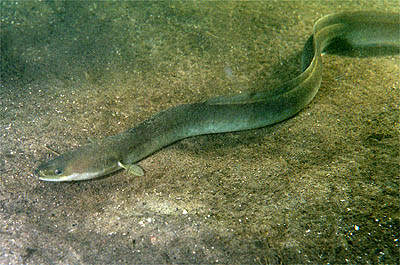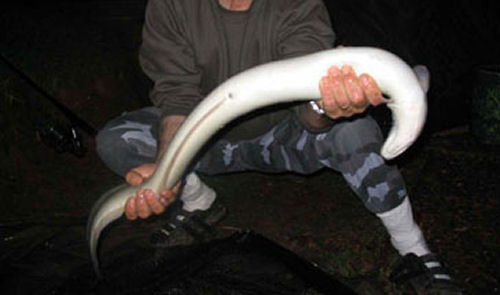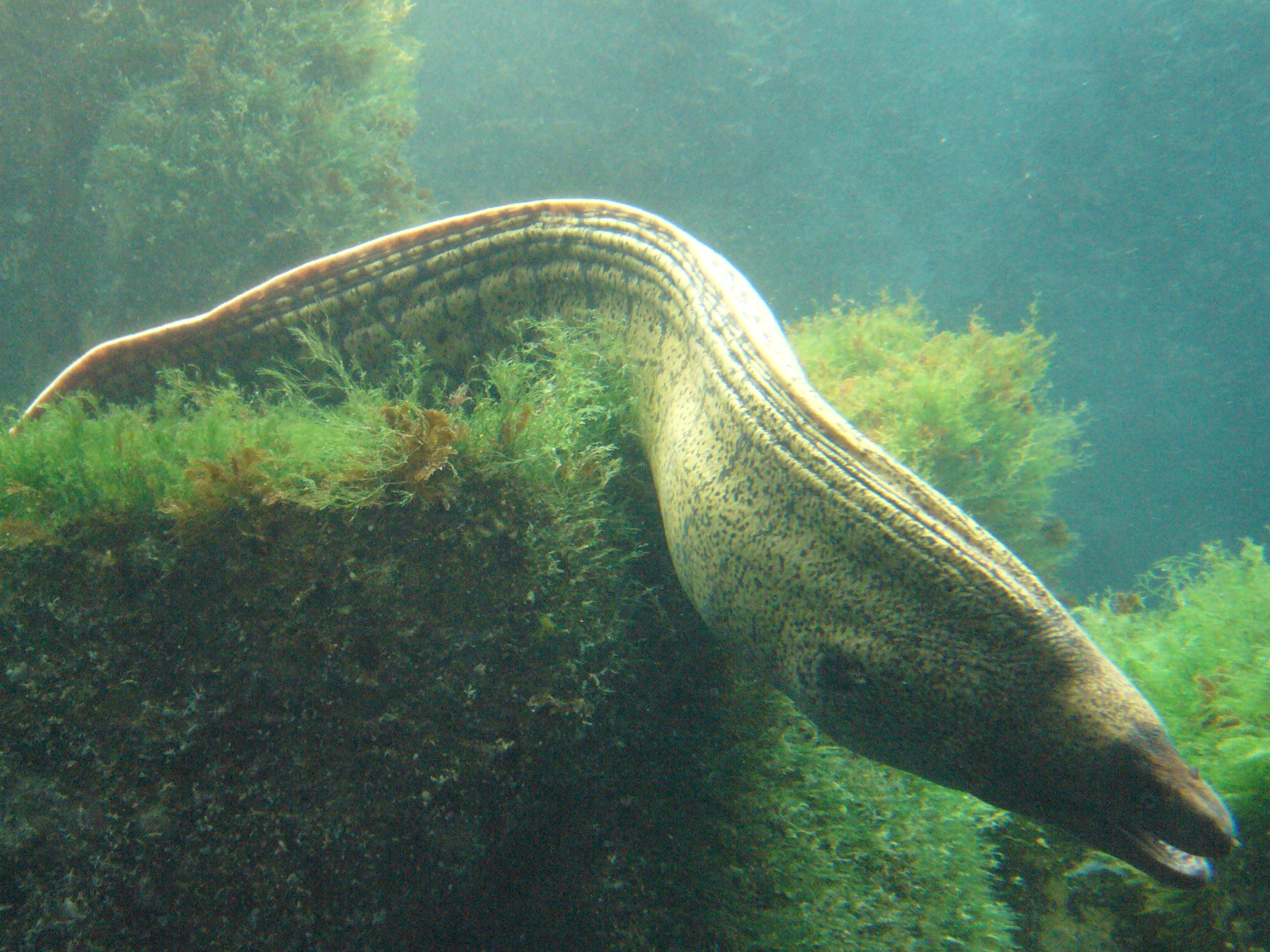European Eel
The European or the Common Eel is still a very mysterious animal as it’s one of the greatest and weirdest travelers on this planet. Although the mature specimens of this species are widespread in almost all the rivers of Europe, their development or maturing were a puzzle still 100 years ago. European Eels start their lives as maggots 1000 kilometers away from Europe deep in The Sargasso Sea.
Down the Gulf Stream in three years time they are taken to Europe. During the three years the maggots shrink a bit and obtain the characteristic cylindrical shape. When the first stage eels reach the shores of Europe they are still transparent and they feed near the river deltas, obtaining the common darker tone. When the eels start the journey upstream they already qualify as fish. During the voyage every eel choses a river, lake or stream where it settles down for many years and feeds. At the age of 7-15 the last transformations happen with the fish – the head becomes sharper and the stomach of the eel turns silver. Interestingly Greek philosopher Aristotle believed that eels transform from earthworms as nobody had ever found baby eels or their caviar in rivers.
Eels mostly feed from small crustaceans, maggots, insects, snails and insect worms (especially in their earlier days). When the eels reach maturity – usually at the age of 17 – 20 years their reproductive systems finish developing and they stop feeding. Also their eyes get bigger so that the eels could see in the dark ocean waters. At this time the female eels usually reach the length of 3 feet (1 m) and male European Eels half of that.
Now they have to make their way back to the place they were born, to give life to new offspring. During the long voyage they do not feed anymore and have to live off of only the fat reserves they have accumulated. Unfortunately not much is known about how the journey is made. Probably they swim in great depths till the Sargasso Sea where they mate. Also the time it takes for thee eels to get to their birthplace is not known, probably they swim some 30 kilometers (approximately 20 miles) a day. As eel eggs(IKRI) have not been seen it is believed that also the mating after which they die happens very deep in the water.
The European eel is a very popular fish in Europe and is served fried, smoked or salted. They are caught in big quantities when they are making their way down-stream back to the Saragasso Sea. Another interesting characteristic of the fish is that it can survive surprisingly long periods of time without water, this is because their thick skin lets oxygen through, meanwhile keeping water in.




i hear these things tend to hide in small gaps in coral or rocks, then when prey moves in front of them, they lunge out to snag their prey. if this is true, why isn’t it included in this page?